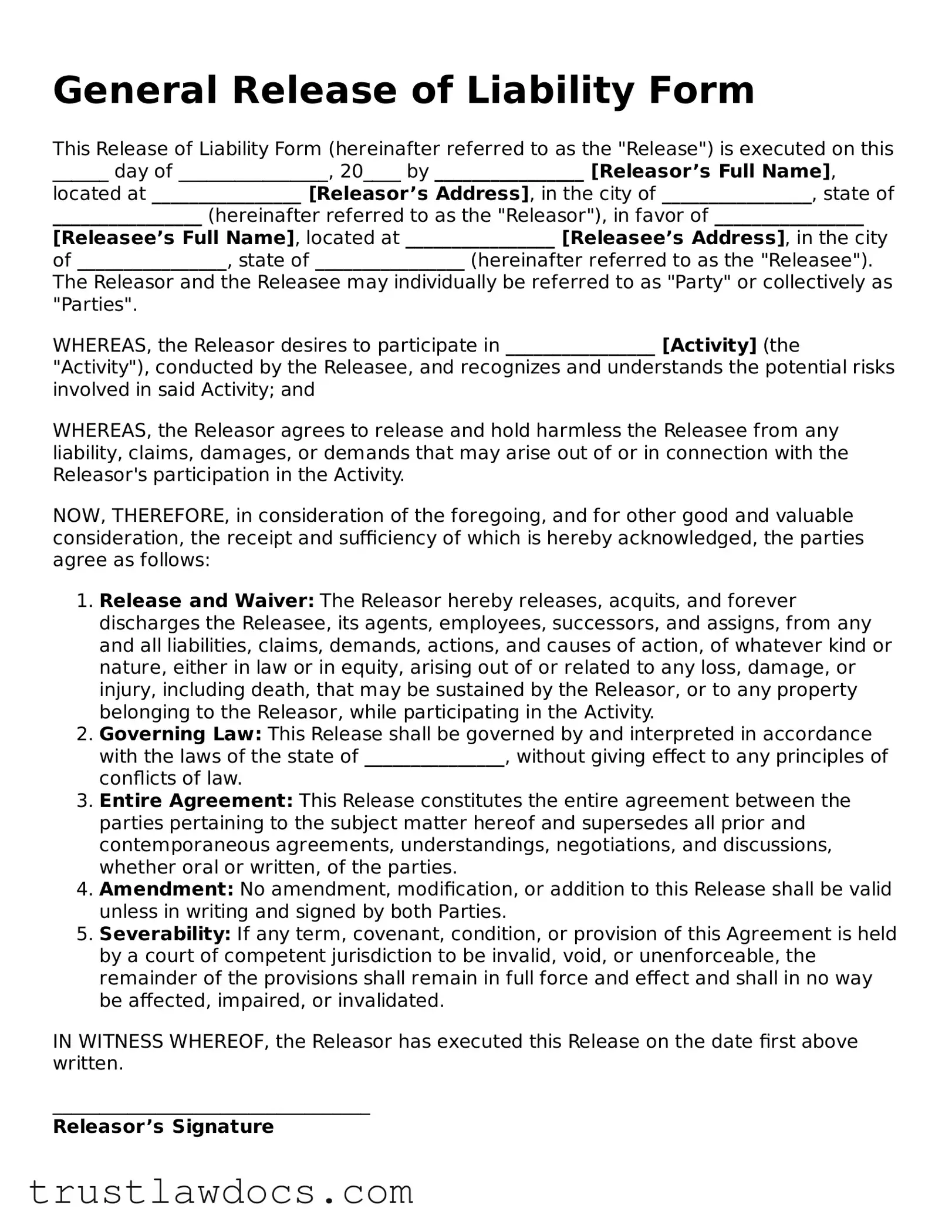What is a General Release and Waiver form?
A General Release and Waiver form is a legal document where an individual agrees to release another party from any legal claims, now or in the future, in connection with a specific event, activity, or circumstance. This form is used to prevent lawsuits and settle disputes amicably.
When should I use a General Release and Waiver form?
This form should be used when an individual decides to relinquish all known and unknown claims against another party. Common settings for its use include the resolution of disputes, participation in risky activities, or completion of transactions that could potentially lead to legal action.
What are the benefits of signing a General Release and Waiver form?
Signing this form benefits both parties by providing peace of mind, reducing legal risks, and helping to avoid costly and time-consuming litigation. It ensures that all parties agree to resolve disputes outside of court and prevents future claims related to the event or transaction in question.
Can I change my mind after signing a General Release and Waiver form?
Generally, once a General Release and Waiver form is signed and all parties have agreed to its terms, it becomes legally binding. Withdrawal from the agreement is not typically allowed, unless the form was signed under duress, fraud, or misrepresentation is proven.
Who should sign the General Release and Waiver form?
The individual who is agreeing to waive their rights (the releasor) and the party being released from liability (the releasee) should both sign the form. In some cases, witnesses or a notary public may also need to sign to validate the agreement.
Does a General Release and Waiver form need to be notarized?
Whether or not the form needs to be notarized depends on the nature of the agreement and the requirements of the jurisdiction where it is being enforced. While notarization is not always mandatory, it can add a layer of authenticity and help protect against claims of forgery.
What should be included in a General Release and Waiver form?
A comprehensive form should include the names and contact information of all parties involved, a clear description of the event or transaction being covered, the specific rights being waived, the date of the agreement, and signatures of all parties. Clear language detailing the release of all claims, known and unknown, is also crucial.
Are there any risks in signing a General Release and Waiver form?
Yes, there are risks. By signing, an individual agrees to give up the right to sue for any claims related to the event or transaction. Therefore, it's important to fully understand the scope of what is being waived and consider getting legal advice before signing.
Can a minor sign a General Release and Waiver form?
A minor typically cannot legally sign a waiver or release form due to age restrictions on entering into contracts. In most cases, a parent or legal guardian must sign on their behalf, agreeing to the waiver of claims. However, laws vary by state, so it's important to check local regulations.
